
9 minute read
80 Years of Habia Cable: From Submarines to ROVs
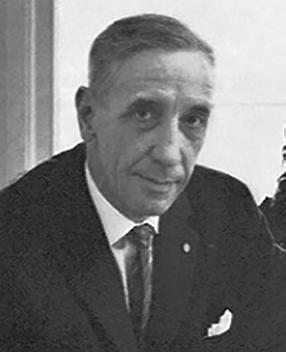
80 YEARS OF HABIA CABLE:
Advertisement
FROM SUBMARINES TO ROVS
Habia Cable are celebrating their 80th birthday this year. This is a special birthday for a special company that was started back in 1941 by Carl “Charlie” Herbert Jacobson, as Hammarby Bakelit Industries (Habia for short), based in the Hammarby dockyard in Stockholm, Sweden. The company originally manufactured components from Bakelite, the polymer of the day. Thanks to the foresight of its founder, Habia went on to become the first company in Europe to manufacture components and cables in PTFE, a material more known as Teflon®.
Carl-Herbert Jacobson, founder of Habia Cable Today, Habia Cable is a custom design and production partner for specialised (Courtesy of Habia Cable) cable and connectivity needs all over the world. The company has four production facilities including R&D; in Sweden, China, Germany and a specialized harness site in Poland. Headquarter is located in Upplands Väsby, nearby Stockholm, and the company employ just above 500 people globally.
ROV Planet talked to Elisabeth Oesterlund, Senior Design Engineer with more than 30 years of experience working with cable solutions development at Habia, to find out more about this iconic Swedish company.
RICHIE ENZMANN: Hi Elisabeth, we'd like to wish Habia Cable a happy 80th birthday! Please tell us a bit about the history of the company. How did it all start?
ELISABETH OESTERLUND: Thank you, Richie! It all started with Carl “Charlie”, the founder of our company, who was a chemical engineer coming from an entrepreneurial family and very interested in the material Bakelite. He had an exceptionally good relationship with DuPont, the major US chemical company that was very innovative already in those days. DuPont encouraged companies to develop different types of components and applications with these materials that they provided, and Habia manufactured various Bakelite components for many industries.
After WWII, DuPont introduced a new material called polytetrafluorethylene, PTFE, a polymer with remarkable properties, resistant to anything; like corrosive acids and solvents, and with very low friction. You probably know it by its commercial brand name, Teflon®, used in many products today. At the time, Charlie had the foresight that this material could be used even more widespread, so he set up a different type of factory at the family farm Brantshammar, north of Stockholm, in the middle of the 50s. Here he started making different components out of PTFE. One of the main products were the high-pressure braided PTFE hoses. This was the first step to start manufacturing electrical cables in 1957, when the first prototypes were made. Then in the 60s, this business was commercialised by Charlie’s son, Carl-Bertil ‘Obi’, and new cable factories were set up in Europe. In short, the beginning of cables and cable manufacturing at Habia.
Elisabeth Oesterlund, Senior Design Engineer (Courtesy of Habia Cable)

Back in the 50s, Habia was the first company in Europe to use the material PTFE in manufacturing of industrial components. (Courtesy of Habia Cable) In the 80s the cable production in Sweden expanded and moved from Brantshammar, Knivsta, to a new facility in Söderfors. It was here the development started with creating a new shipboard cable standard for the Swedish Navy, still valid today. (Courtesy of Habia Cable)
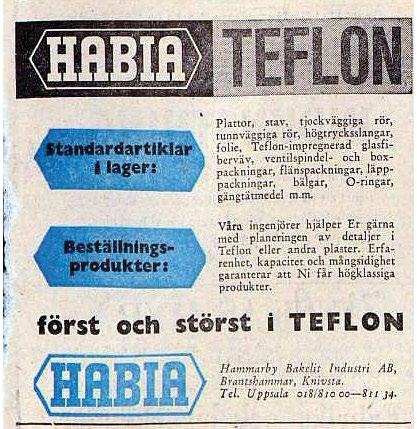

Courtesy of iStock
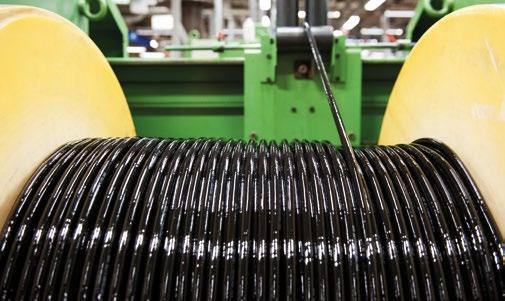
Cables for underwater applications. This is a custom, neutral buoyant tether cable for a specific ROV. (Courtesy of Habia Cable)

RE: That’s very interesting and clearly shows the entrepreneurial spirit of the family that Habia was born out of. How did the company move into the submarine defence sector?
EO: Well, in the mid-60s this operation expanded very quickly because Habia had the benefit of creating longer lengths of cables, which turned out to be suitable for military aerospace applications. Then in the late 70s, the family sold the company to the investment house Sponsor AB, who expanded the cable production to Söderfors, Sweden. This was also the starting point of manufacturing cables to a new class of submarine vessels built for the Swedish Navy.
With our legacy in the defence sector, the Swedish Ministry of Defence (FMV) asked us for help to improve and upgrade the existing rubber cables on their fleet, as they were thick and rigid, not very resistant to oils. The cables Habia developed and supplied was a new generation of cables with modern materials, in comparison to the traditional ones using rubber in insulation and outer covering.
Cables for underwater applications. (Courtesy of Habia Cable)
The new cables with improved properties offered benefits like long lifespan, trimmed dimensions and low weight, which set a new standard for shipboard cables in the industry. The new cable concept also enabled advanced harnesses with penetrators, important for the submarines’ functionality.
RE: I guess during this period of time many navies went through similar upgrade programmes.
EO: Yes. During end of the 90’s, the next generation of shipboard cables were developed to meet the demands for improved safety in case of a fire. This required the use of so-called halogen free, low smoke materials, important in order to reduce the amount of toxic and corrosive products released during a fire. Habia’s high performance cables for shipboard use became then even more established, acquiring classification approvals. As example, certification to the British MOD Naval standards was acquired, enabling Habia to supply cables to the British Royal Navy. Defence cables, both for land and sea, have been one of our company’s niches from the year 2000 up until now.
RE: That is a remarkably interesting history that Habia have. But let’s take a look at some of the ROV applications too. How did the company actually get into making cables for the ROV industry?
EO: Around 2005 we started developing custom subsea cables to smaller ROV’s requiring trimmed, low-density cables. At the time, we created the first smart concepts for umbilicals where the combination of electrical properties, flexibility, mechanical strength and neutral buoyancy was superior requirements for these applications.

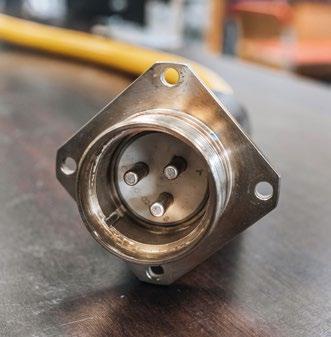
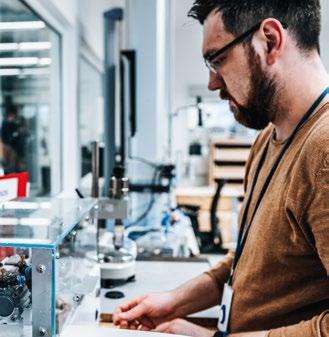
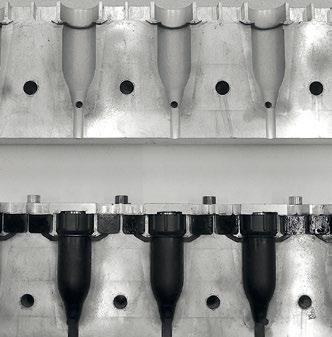
Habia’s factory in Lubiezsyn, Poland, develops cable systems and harnesses for a range of defence, marine, and offshore applications – an expertise that goes back to the 80s. (Courtesy of Habia Cable)
Habia Zeroarc™ is a ground-breaking insulation system that allows us to create compact, medium to high voltage cable solutions. (Courtesy of Habia Cable)
This was the start and soon we were able to make more sophisticated umbilicals adding optical fibres integrated into traditional copper core cables. Since then, several ROV customers have been buying Habia’s tethers, umbilicals, cables and cable systems in various configurations, because we can supply for a vast range of applications – even deep-sea ones. Our company has the knowledge to design and manufacture these cables as per the requirements of the customers, and the ability to test them in our in-house pressure chambers. We also offer extensive qualification testing programmes if needed.
Of course, the cables supplied by Habia are not only neutrally buoyant cables, but also cables mounted onto the vehicle. Cable solutions for all electrical needs, i.e. lighting, camera, video, tools, need to comply with complex requirements outside electrical performance, like water and pressure resistance, flexibility and high-quality connectivity.
RE: How about some of the other underwater applications out there?
EO: Outside the ROV world, many of Habia’s customers produce systems for sensors, sonars and seismic applications. For these, termination compatibility with connectors and penetrators, offering a watertight seal for cable/harness to penetrate a bulkhead is also very important to consider. They also need to be watertight and very often they have specific requirements to go as high as possible in the electrical current ratings, but with the smallest cross section possible.
Obviously, the electrical performance of the cable is most important when it comes to an application. A noticeable trend are increased demands for power capacity and transmission of signals at higher frequencies, which put a lot of requirements on the cable and the control of production. It’s often a challenge to combine all the different requirements, and Habia’s extensive engineering experience across cables and harnesses is needed to find the best possible solution. But that is what we’re good at as a custom solutions provider. We are often involved in our customers’ product development, to help finding the most optimal cable solution early in the process. Examples of newer, exciting application areas are the tidal and wave power turbines, where we have developed complete solutions for cables and connectors.
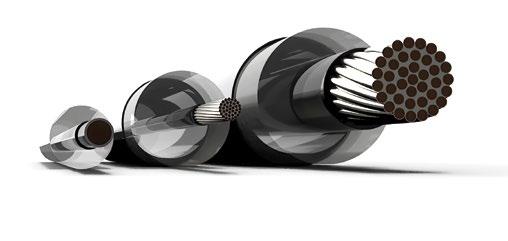
RE: I’ve heard that Habia is working on a new technology that could also be used in submersible applications. Can you please tell us more about that?
EO: Yes. That is our new Zeroarc™ technology. This is a unique design for applications requiring medium and high voltage cables with higher operating voltages combined with the need for compact, reduced sizes and wide temperature performance. Cable solutions created by the Zeroarc™ concept is free from voids and impurities, resulting in a cable without partial discharges – a not wanted effect when applying higher voltages. For the use of submersibles using this technology in the power cores, they can handle higher temperatures, and as such can carry more current in a thinner cable. As a result of using the Zeroarc™ concept, future ROV cables/umbilicals could in turn become lighter, smaller, and easier to handle. Further on, Habia has also developed solutions for splicing and connectorization in the concept.
RE: Thank you for explaining the history of Habia and sharing your expertise to our readers and us. It’s been a pleasure talking to you, Elisabeth!
LOOKING INTO THE FUTURE
The company hopes that this new Zeroarc™ technology can open up even more opportunities, since it enables very powerful cable solutions that can solve the power needs of the future. Over the last 80 years, Habia continued to experiment, invest, and invent. Today, Habia is a global leader in custom cable solutions for the world’s most demanding applications. They like to think that if Carl could see them now, he’d agree that his innovative and entrepreneurial spirit still lives on!











